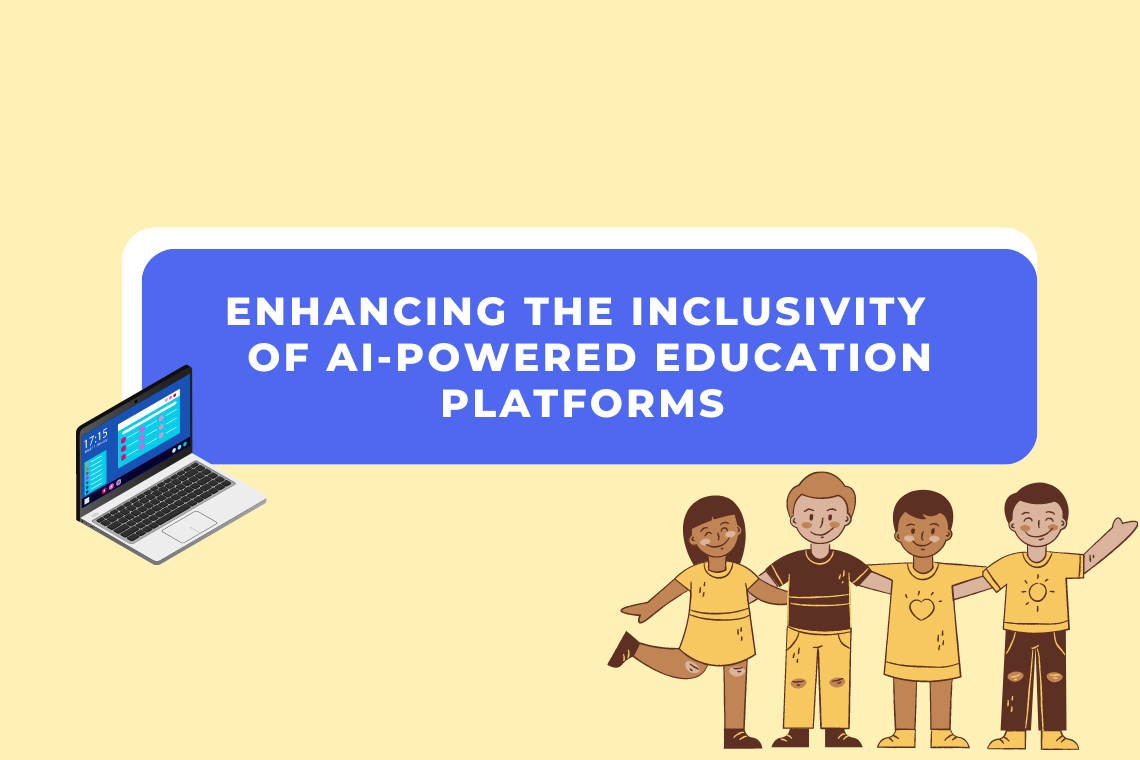Who could have imagined AI would be a huge part of our lives? Although the concept seemed futuristic, it was officially launched a few years ago. The areas that utilise AI are endless. From healthcare to education, AI can do it all! Many fear that AI could replace their role in society; however, we must emphasise that AI is merely used to make our jobs easier. Since it is being incorporated into well-known areas like education, promoting inclusivity within AI-driven education is essential. As society has evolved to become more inclusive of various people, so should this element of technology which is of great use. Let's explore how we can aim to make AI-powered education more inclusive in the future!
Modifying AI-driven platforms for students with special needs
AI chatbots generally create a learning-friendly workspace. Their conversational style and methods of interaction promote student engagement. This quality is ideal when exposing AI-powered platforms to students with special needs or intellectual impairments. Students with learning difficulties require special education to assist with task execution or understanding specific content. Sometimes teachers are not able to provide their full attention to help these students, as they must monitor a full class. The lack of assistance or attention could make these students less engaged. However, with the assistance of an AI chatbot, anything could be made possible! AI-powered platforms communicate impartially since their responses have a neutral tone. Depending on the question asked by the user, their response is also tailored to their learning level. AI platforms could develop a text-to-speech feature that could aid those with visual or auditory impairments. In addition, a visual zoom feature could also be used to assist with learning. The inclusion of these features would enhance the existing tools and make these platforms more user-friendly.
Inclusive teaching methods
We all have different learning styles that help us internalise information efficiently. Whether it's visual learning, active recall or just classic memorisation, they are all relevant methods. Some of us require a little assistance with learning, but sometimes it's hard to find the perfect tutor. What if I told you there was a tutor that could work for all of us? That's right, a resource that uses inclusive teaching methods. AI-powered platforms have it all! From visuals to interactive activities, they can aid any learning! The simple conversational method of AI chatbots is extremely engaging as they are objective. Its range of explanation styles caters to students of all year levels and their different learning stages. Teachers can only sometimes specialise their lesson plans for certain students; hence AI chatbot's specialised learning feature would come in handy. Since we have different levels of understanding, learning modules/quizzes must be tailored to our level of learning. This way, we feel encouraged by attempting content ahead of our knowledge level. In addition, adopting translation tools for international students would be beneficial as all individuals may not be fluent in English. A platform that already has this feature is Noodle Factory. Students using Noodle Factory can communicate and obtain responses in their preferred language. These features create a comfortable and easily understandable learning space. Furthermore, adopting these tailored features would improve user experience and increase the usage of educational AI platforms.
Diverse representation
The various backgrounds we are from can influence our learning styles. Most importantly, the resources we can access greatly impact our work ethic. For instance, individuals from low socioeconomic backgrounds may not have the opportunity to receive private tutoring. This could be due to factors like hefty fees, transport issues or other commitments they might have. However, AI-powered education can solve a lot of these problems. With a one-time purchase of a digital gadget, individuals will gain access to a world of education. Although the initial cost of a laptop or iPad is expensive, there are ways to bear the cost, such as seeking financial aid. In the long run, the AI-driven education style may be the most cost-effective. The majority of platforms offer various types of packages with reasonable costing. AI platforms could aim to create a special package for those requiring financial aid if these costs are still over the budget. This package could include discounted prices, specialised payment plans, extra tutoring assistance etc. The best part of AI platforms is the non-discriminatory nature of the AI chatbots, which communicate in a neutral manner. This way, individuals will feel safe in all forms since everyone is treated equally. It is highly important to create a safe, fair and comfortable environment for all students.
Conclusion
Moreover, the implication of these suggested improvements or expanding on the current features of these AI platforms can promote the benefits of AI-driven education. Creating specialised teaching methods, providing tailored resources for special needs individuals and aiding financially strained students will create a well-structured educational workspace. It is essential to recognise the importance of introducing inclusivity to AI-driven platforms as it is aimed to be used by people of all cultures, intellectual levels and learning styles.
